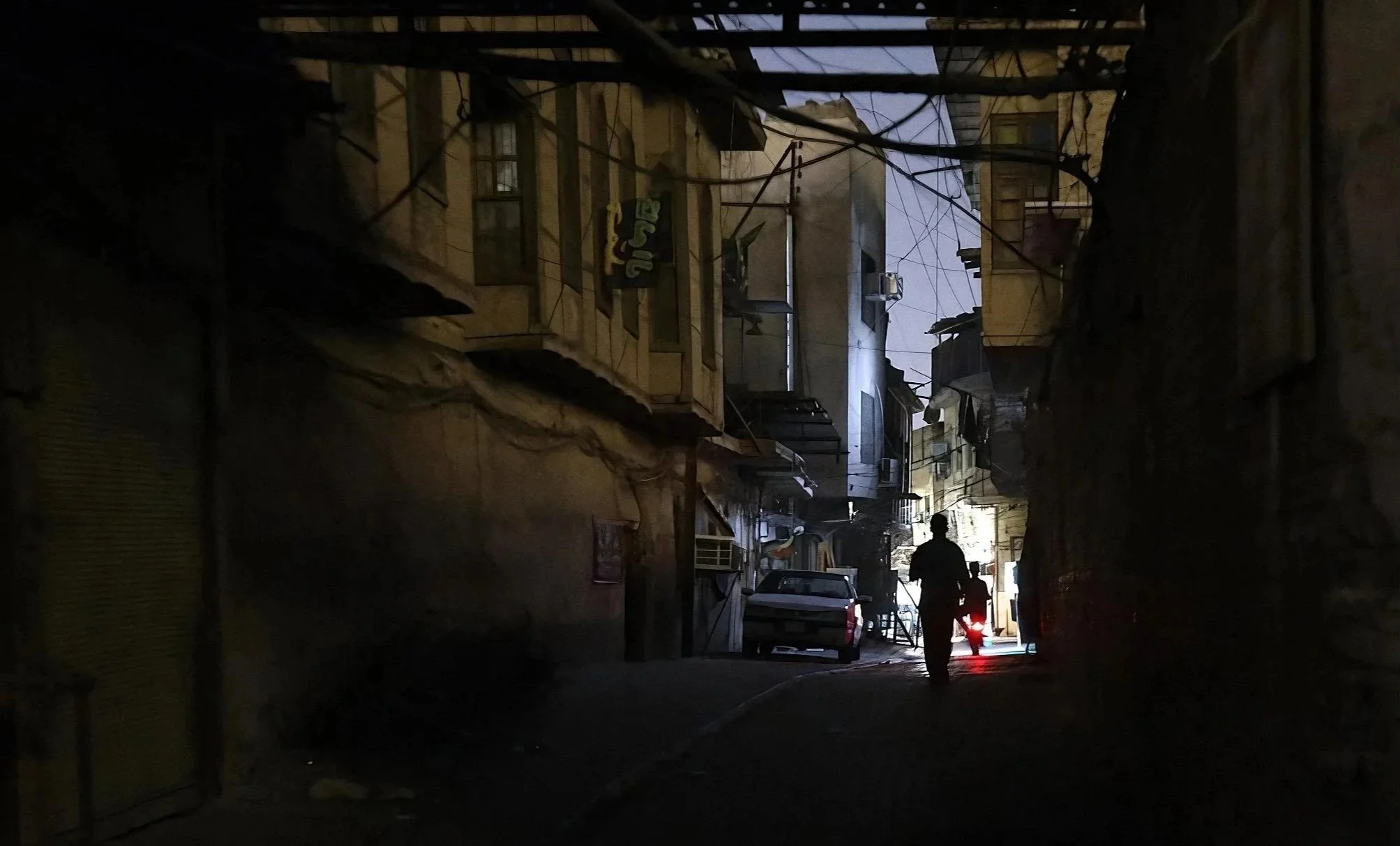
After the Blackout:
Can Iraq Swap Dependence for Domestic Clean Power?
By Karim Elgendy
15 August 2025
Iraq’s nationwide power outage this week was more than a one off infrastructure failure. Amid record-breaking heatwaves pushing temperatures above 50°C, It was the latest and most visible symptom of a long-term energy policy problem: the country’s structural dependence on imported gas and electricity from Iran. That dependence - once promoted as a pragmatic solution to chronic supply shortages - has become an Achilles’ heel, leaving Iraq dangerously exposed to political, economic, and climatic shocks.
A Fragile Energy Backbone
Despite Iraq being the second-largest oil producer in the Middle East, the country itself is energy insecure and dependent on neighbors for a large portion of its energy needs. Iran has been Iraq’s largest external energy supplier for over a decade. Gas imports from Iran power account for almost 30% of Iraq’s electricity generation capacity, while direct electricity imports contribute an additional 3%. In theory, this arrangement offered Iraq a reliable, relatively quick-to-scale energy lifeline while the country rebuilt domestic capacity. In practice, it created a dependency on a single supplier whose reliability is anything but guaranteed.
That vulnerability became painfully clear in May 2025, when Iran slashed gas exports to Iraq by over 50%, from around 45 million cubic meters per day (mcm/d) to roughly 20 mcm/d. This sudden drop caused a shortfall of about 3,500 megawatts, almost 9% of Iraq’s electricity generation capacity, and enough to disrupt power for 2.5 million homes at a time when cooling needs were surging.
Why the Taps Keep Running Dry
Two main factors explain Iran’s repeated cuts. First, Iraq owes Tehran billions for past imports, but U.S. sanctions complicate direct payments. Much of Iraq’s debt to Iran is trapped in restricted accounts, leading Tehran to use supply cuts as leverage. Second, during extreme weather, Iran prioritizes its electricity grid, diverting gas for internal power generation.
The fragility of this arrangement was compounded in March 2025, when the United States ended a longstanding sanctions waiver that had allowed Iraq to import Iranian energy without penalty. Although Baghdad negotiated temporary arrangements to keep the supply flowing, the message to Iraqi policy makers was clear: this dependence is both geopolitically and operationally unsustainable.
.People walk on a darkened street after a power outage in Baghdad, Iraq, on Aug. 11, 2025. (Photo by Khalil Dawood/Xinhua)
A Heatwave, a Grid Collapse, and a Political Shock
The recent blackout was caused by the failure of two major transmission lines under record heat and demand stress in the provinces of Babylon and Karbala. But while the proximate cause was technical, the underlying driver was systemic. Iraq’s inability to produce and distribute enough power domestically, forces it to lean heavily on an unreliable partner. That gap leaves the grid acutely vulnerable to simultaneous shocks - technical faults, political rifts, and climatic extremes.
Heatwaves in Iraq are becoming longer, hotter, and more frequent. By the end of this century, many of the country’s most populous regions could spend over half of the warm season under heatwave conditions. Under the IPCC’s moderate emissions scenarios, Iraq’s power assets are expected to face 40-60 additional days per year above 40°C under high emissions, almost the entire grid could endure 60–80 extra days.
The Road Not Taken
In 2019, the previous Iraqi government launched a renewable energy strategy aiming for 20% of electricity to be generated from solar and wind by 2030. In 2021 Baghdad signed deals with companies like PowerChina and Masdar for solar projects with a total capacity of 4 gigawatts. However, progress has been painfully slow, with financing hurdles, political instability, and shifting priorities delaying construction, while short-term fixes via Iranian imports have remained politically expedient.
By deprioritizing renewable buildout in favor of imported gas, Iraq traded a path toward energy sovereignty for an ever-deepening dependency.
By deprioritizing renewable buildout in favor of imported gas, Iraq traded a path toward energy sovereignty for an ever-deepening dependency.
Breaking the Cycle
If this week’s blackout is to be the last of its scale, Iraq must address both supply and demand vulnerabilities:
Diversify energy sources and reinvest in domestic renewables: Solar and wind can be deployed faster than new gas pipelines and offer insulation from geopolitical shocks.
Modernize the grid: Investment in transmission infrastructure and maintenance would reduce the risk of cascading failures like the one seen this week.
Tackle demand-side inefficiency: High-subsidy pricing encourages inefficient use of electricity. Reforming tariffs can incentivize conservation without harming vulnerable households.
From Energy Client to Energy Sovereign
Energy security is not just about megawatts but also about resilience, independence, and the ability to withstand shocks. Right now, Iraq’s electricity lifeline runs through Tehran, with Washington holding a sanctions switch that can cut it off at will. In an era of escalating climate extremes, that is not a sustainable position for any country, least of all one as vulnerable to extreme heat as Iraq.
The lesson is clear: dependence on a single, geopolitically entangled supplier is a liability. Iraq’s path to stability must run through large-scale investment in domestic renewable energy, alongside comprehensive grid upgrades to handle rising demand and extreme heat. Pairing clean generation with a modernized, more flexible grid would not only reduce reliance on imports but also create a more secure, climate-resilient energy future. Inaction will leave Iraq trapped in a cycle where each heatwave brings not only scorching temperatures, but immense political heat.
Karim Elgendy is the Executive Director of the Carboun Institute




